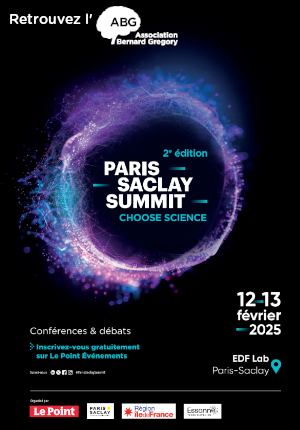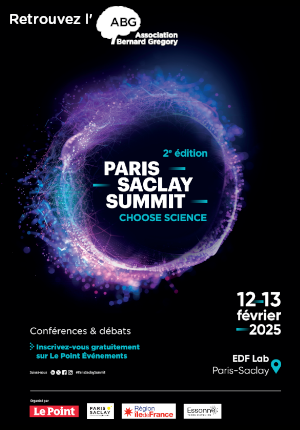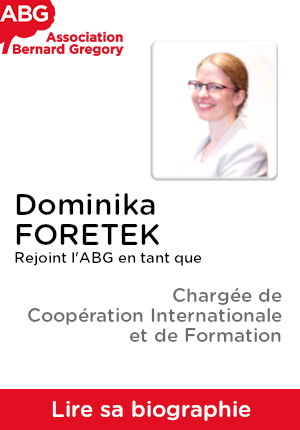L'imagerie d'exoplanètes avec le RomanSpace Telescope // Exoplanet imaging with Roman Space Telescope
|
ABG-128281
ADUM-61107 |
Thesis topic | |
| 2025-02-01 | Public funding alone (i.e. government, region, European, international organization research grant) |
Observatoire de Paris
MEUDON Cedex - France
L'imagerie d'exoplanètes avec le RomanSpace Telescope // Exoplanet imaging with Roman Space Telescope
- Earth, universe, space sciences
Exoplanètes, imagerie haut contraste
Exoplanets, High contrast imaging
Exoplanets, High contrast imaging
Topic description
L'imagerie haute-dynamique représente l'avenir de l'exploration des exoplanètes depuis l'espace. Tandis que les missions de transit développées par l'ESA, à l'image de TESS et CHEOPS, sont en cours ou en développement (PLATO prévu pour 2026, Ariel pour 2029), les futures missions exoplanétaires de la NASA se concentreront exclusivement sur l'imagerie. Cette technique est en effet la seule capable de distinguer directement la lumière émise par les exoplanètes de celle de leur étoile hôte, ouvrant ainsi la voie à une exploration et une caractérisation méthodique des zones habitables autour des étoiles voisines du Soleil. Après les avancées apportées par les instruments spatiaux à haut contraste développés pour Hubble et Webb, la première mission intégrant des optiques actives, le Roman Space Telescope (RST), sera lancée en 2027. Par ailleurs, le Decadal Survey de la communauté scientifique américaine a identifié comme priorité majeure le développement d'une mission « flagship », semblable à Hubble et Webb, désormais baptisée Habitable Worlds Observatory (HWO) dont le but premier est la détection d'exoplanètes terrestres dans la zone habitable de leurs étoiles.
Au niveau européen, l'équipe Très Haute Dynamique (THD2) du LIRA, à l'Observatoire de Paris à Meudon, est un acteur de premier plan dans ce domaine avec le développement du banc THD2, un banc expérimental destiné à tester de nouveaux composants, méthodes actives et algorithmes de post-traitement dans des conditions proches de celles de l'espace pour les instruments haut contraste dédiés à l'imagerie d'exoplanètes. Ce projet, soutenu par le CNES, l'ESA et Airbus Espace, a permis d'atteindre des performances de contraste inégalées en dehors des environnements sous vide disponibles exclusivement à NASA/JPL. Il donne lieu également à de nombreuses collaborations internationales.
Dans ce contexte, nous proposons une thèse pendant laquelle le candidat étudiera et optimisera des techniques novatrices appliquées au coronographe du RST par simulations numériques et en laboratoire sur le banc THD2. Le candidat exploitera également les premières données de l'instrument RST. L'ensemble des travaux permettra la mise au point de nouvelles stratégies d'observation pour préparer les missions futures comme HWO.
------------------------------------------------------------------------------------------------------------------------------------------------------------------------
------------------------------------------------------------------------------------------------------------------------------------------------------------------------
High-dynamic imaging represents the future of exoplanet exploration from space. While transit missions developed by ESA and NASA, such as TESS and CHEOPS, are underway or in development (PLATO scheduled for 2026, Ariel for 2029), NASA's future exoplanetary missions will focus exclusively on imaging. This is the only technique capable of directly distinguishing the light emitted by exoplanets from that of their host star, paving the way for methodical exploration and characterization of habitable zones around stars close to the Sun. Following the advances made by the high-contrast space instruments developed for Hubble and Webb, the first mission incorporating active optics, the Roman Space Telescope (RST), will be launched in 2027. In addition, the US scientific community's Decadal Survey has identified as a major priority the development of a flagship mission, similar to Hubble and Webb, now called the Habitable Worlds Observatory (HWO), whose primary aim is to detect terrestrial exoplanets in the habitable zone of their stars.
At European level, LIRA's Très Haute Dynamique (THD2) team at Paris Observatory in Meudon is a leading player in this field with the development of the THD2 bench, an experimental testbed designed to test new components, active methods and post-processing algorithms in near-space conditions for high-contrast instruments dedicated to exoplanet imaging. This project, supported by CNES, ESA and Airbus Espace, has achieved unrivaled contrast performance outside the vacuum environments available exclusively to NASA/JPL. It has also led to numerous international collaborations.
In this context, we are proposing a thesis ranging from the use of this experimental bench to optimize in-flight operations of the RST coronagraph, to the exploitation of the instrument's first data, via the development of new observing strategies with such instruments. The knowledge acquired will be essential for the preparation of the HWO mission.
------------------------------------------------------------------------------------------------------------------------------------------------------------------------
------------------------------------------------------------------------------------------------------------------------------------------------------------------------
Début de la thèse : 01/10/2025
WEB : https://thd-bench.lesia.obspm.fr
Au niveau européen, l'équipe Très Haute Dynamique (THD2) du LIRA, à l'Observatoire de Paris à Meudon, est un acteur de premier plan dans ce domaine avec le développement du banc THD2, un banc expérimental destiné à tester de nouveaux composants, méthodes actives et algorithmes de post-traitement dans des conditions proches de celles de l'espace pour les instruments haut contraste dédiés à l'imagerie d'exoplanètes. Ce projet, soutenu par le CNES, l'ESA et Airbus Espace, a permis d'atteindre des performances de contraste inégalées en dehors des environnements sous vide disponibles exclusivement à NASA/JPL. Il donne lieu également à de nombreuses collaborations internationales.
Dans ce contexte, nous proposons une thèse pendant laquelle le candidat étudiera et optimisera des techniques novatrices appliquées au coronographe du RST par simulations numériques et en laboratoire sur le banc THD2. Le candidat exploitera également les premières données de l'instrument RST. L'ensemble des travaux permettra la mise au point de nouvelles stratégies d'observation pour préparer les missions futures comme HWO.
------------------------------------------------------------------------------------------------------------------------------------------------------------------------
------------------------------------------------------------------------------------------------------------------------------------------------------------------------
High-dynamic imaging represents the future of exoplanet exploration from space. While transit missions developed by ESA and NASA, such as TESS and CHEOPS, are underway or in development (PLATO scheduled for 2026, Ariel for 2029), NASA's future exoplanetary missions will focus exclusively on imaging. This is the only technique capable of directly distinguishing the light emitted by exoplanets from that of their host star, paving the way for methodical exploration and characterization of habitable zones around stars close to the Sun. Following the advances made by the high-contrast space instruments developed for Hubble and Webb, the first mission incorporating active optics, the Roman Space Telescope (RST), will be launched in 2027. In addition, the US scientific community's Decadal Survey has identified as a major priority the development of a flagship mission, similar to Hubble and Webb, now called the Habitable Worlds Observatory (HWO), whose primary aim is to detect terrestrial exoplanets in the habitable zone of their stars.
At European level, LIRA's Très Haute Dynamique (THD2) team at Paris Observatory in Meudon is a leading player in this field with the development of the THD2 bench, an experimental testbed designed to test new components, active methods and post-processing algorithms in near-space conditions for high-contrast instruments dedicated to exoplanet imaging. This project, supported by CNES, ESA and Airbus Espace, has achieved unrivaled contrast performance outside the vacuum environments available exclusively to NASA/JPL. It has also led to numerous international collaborations.
In this context, we are proposing a thesis ranging from the use of this experimental bench to optimize in-flight operations of the RST coronagraph, to the exploitation of the instrument's first data, via the development of new observing strategies with such instruments. The knowledge acquired will be essential for the preparation of the HWO mission.
------------------------------------------------------------------------------------------------------------------------------------------------------------------------
------------------------------------------------------------------------------------------------------------------------------------------------------------------------
Début de la thèse : 01/10/2025
WEB : https://thd-bench.lesia.obspm.fr
Funding category
Public funding alone (i.e. government, region, European, international organization research grant)
Funding further details
Concours d'accès aux contrats doctoraux*Autre financement ou appel à projet
Presentation of host institution and host laboratory
Observatoire de Paris
Institution awarding doctoral degree
Observatoire de Paris
Graduate school
127 Astronomie et Astrophysique d'Ile de France
Candidate's profile
Les notions suivantes seraient utiles :
- Exoplanète
- Codage Python
Un intérêt et/ou des notions en instrumentation seraient un plus, notamment en:
- Optique ondulatoire, optique de Fourier,
- optique adaptative, miroirs déformables
- traitement du signal
The following concepts would be useful: - Exoplanets - Python coding An interest in and/or knowledge of instrumentation would be a plus, particularly in: - Wave optics, Fourier optics, - adaptive optics, deformable mirrors - signal processing
The following concepts would be useful: - Exoplanets - Python coding An interest in and/or knowledge of instrumentation would be a plus, particularly in: - Wave optics, Fourier optics, - adaptive optics, deformable mirrors - signal processing
2025-05-15
Apply
Close
Vous avez déjà un compte ?
Nouvel utilisateur ?
More information about ABG?
Get ABG’s monthly newsletters including news, job offers, grants & fellowships and a selection of relevant events…
Discover our members
 Tecknowmetrix
Tecknowmetrix  Généthon
Généthon  CASDEN
CASDEN  Institut Sup'biotech de Paris
Institut Sup'biotech de Paris  TotalEnergies
TotalEnergies  Aérocentre, Pôle d'excellence régional
Aérocentre, Pôle d'excellence régional  Nokia Bell Labs France
Nokia Bell Labs France  Laboratoire National de Métrologie et d'Essais - LNE
Laboratoire National de Métrologie et d'Essais - LNE  PhDOOC
PhDOOC  Institut de Radioprotection et de Sureté Nucléaire - IRSN - Siège
Institut de Radioprotection et de Sureté Nucléaire - IRSN - Siège  SUEZ
SUEZ  MabDesign
MabDesign  ANRT
ANRT  ADEME
ADEME  Ifremer
Ifremer  Groupe AFNOR - Association française de normalisation
Groupe AFNOR - Association française de normalisation  MabDesign
MabDesign  ONERA - The French Aerospace Lab
ONERA - The French Aerospace Lab  CESI
CESI







